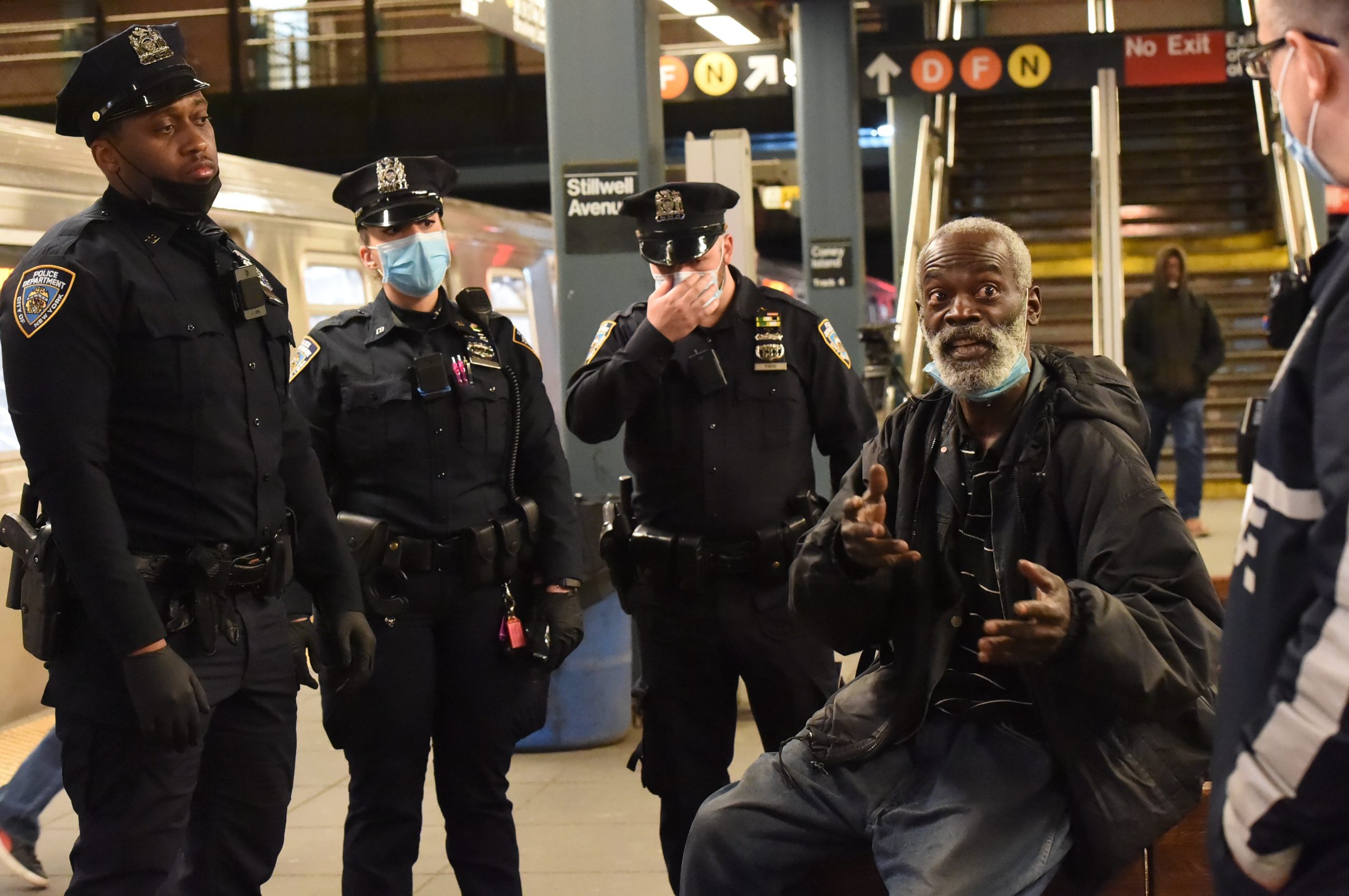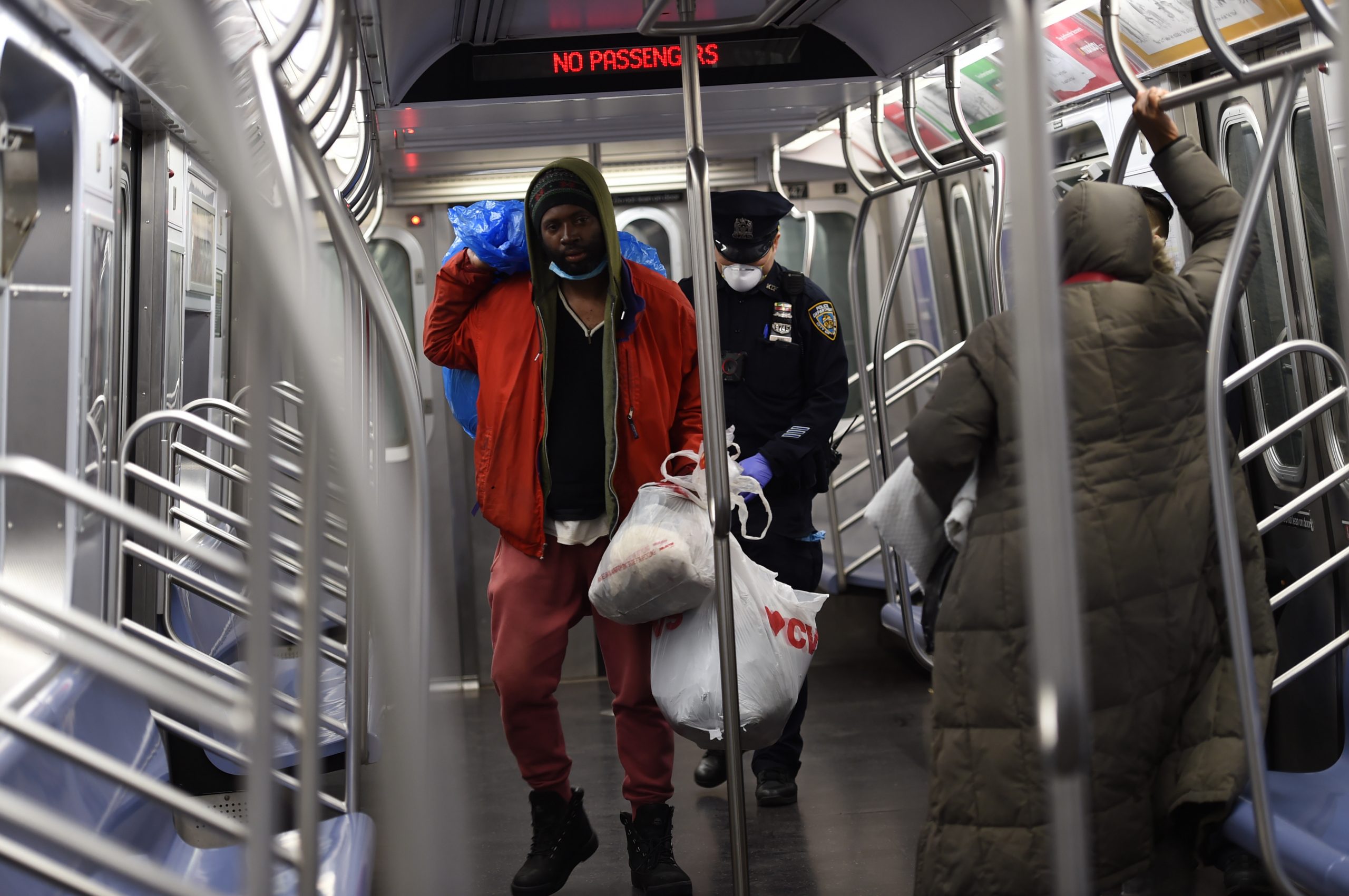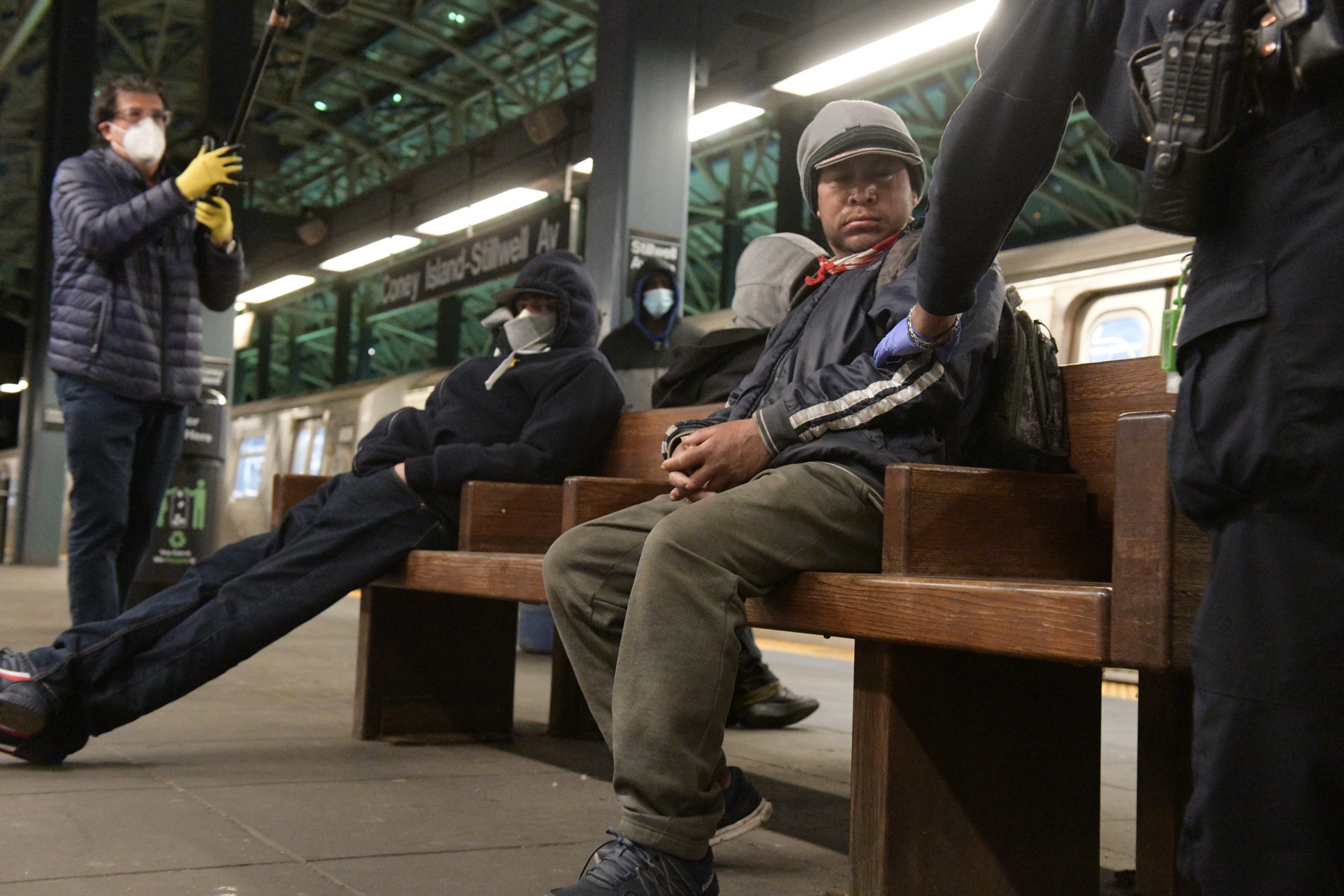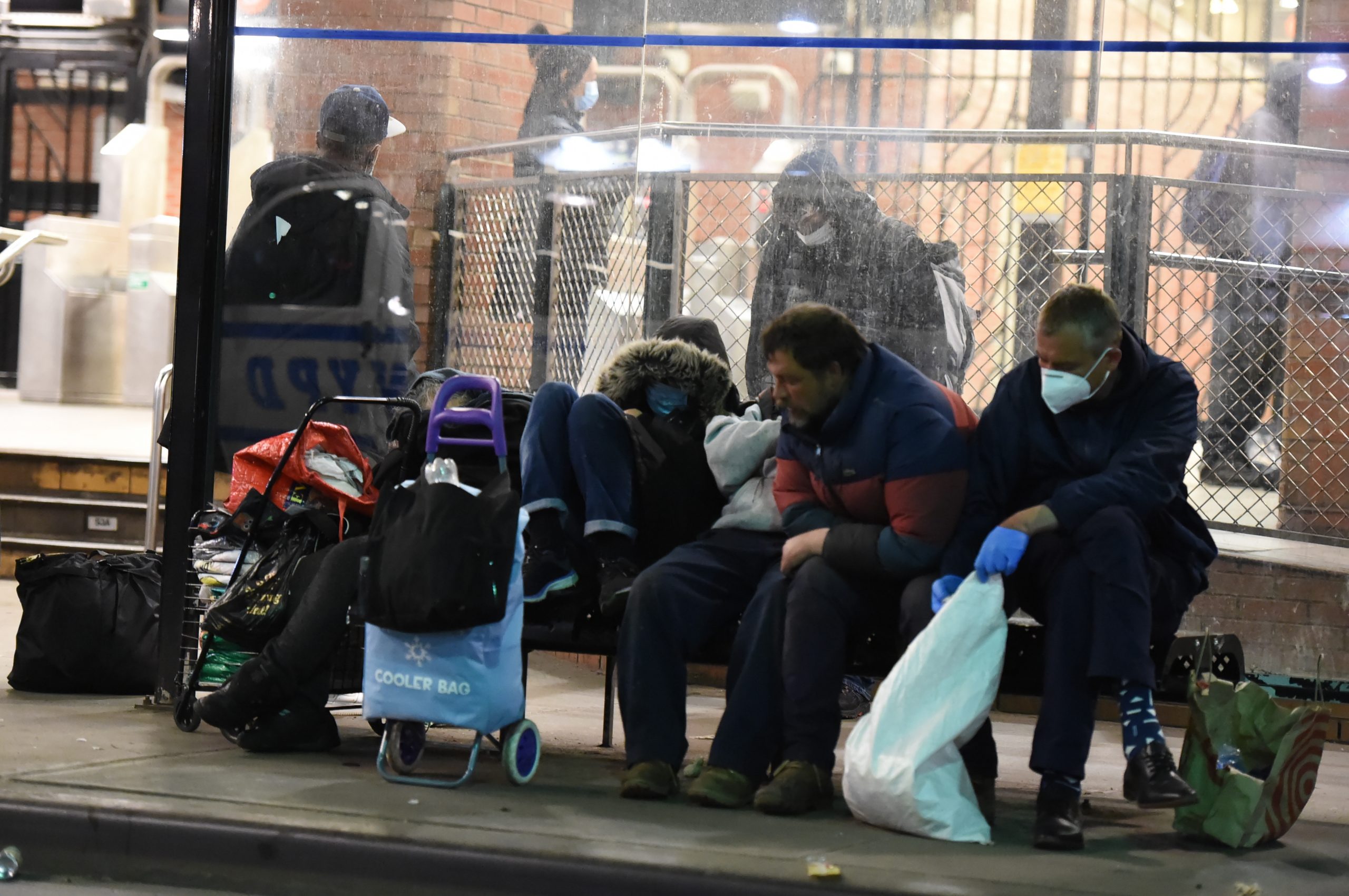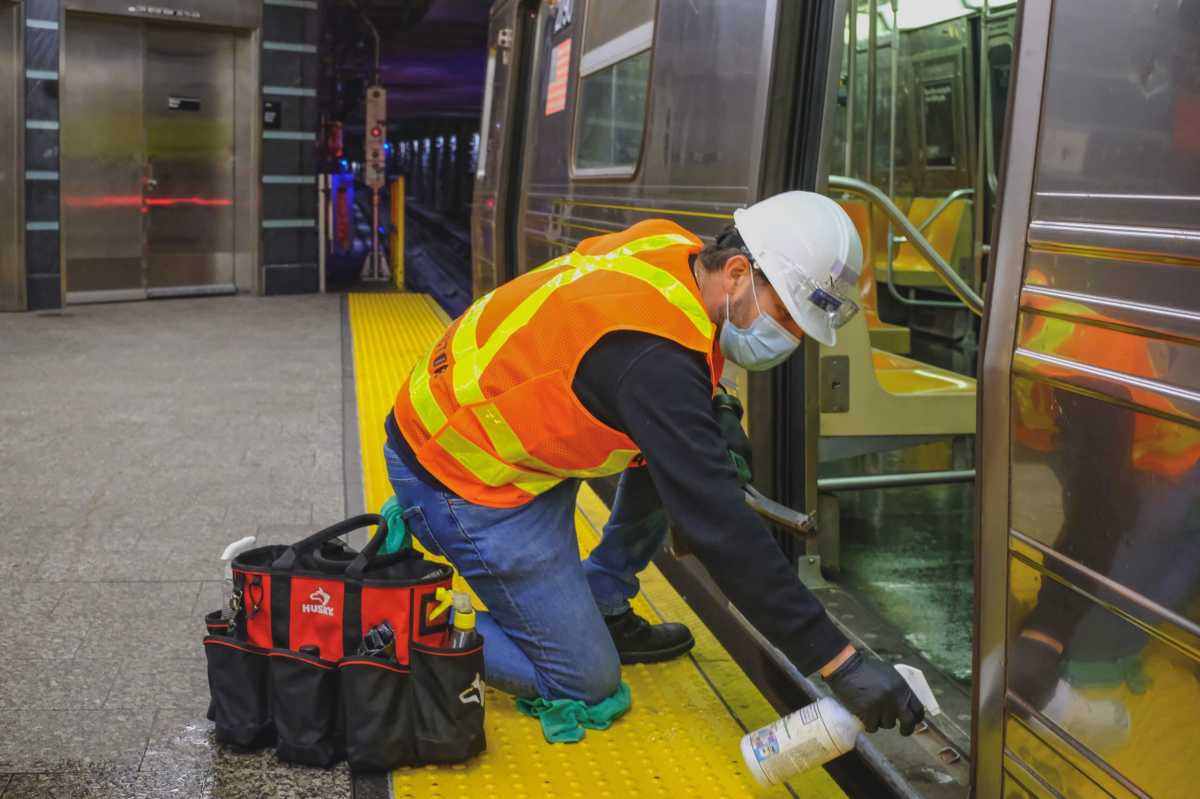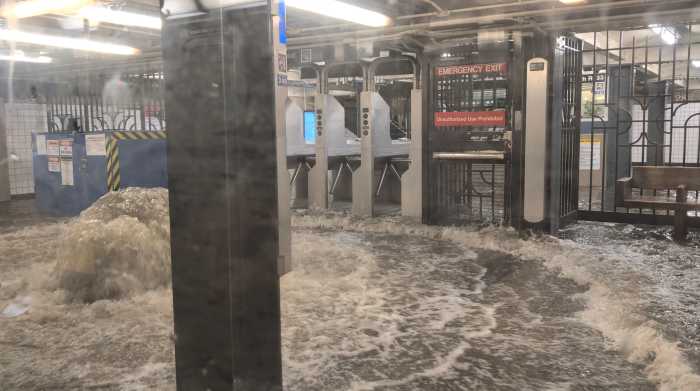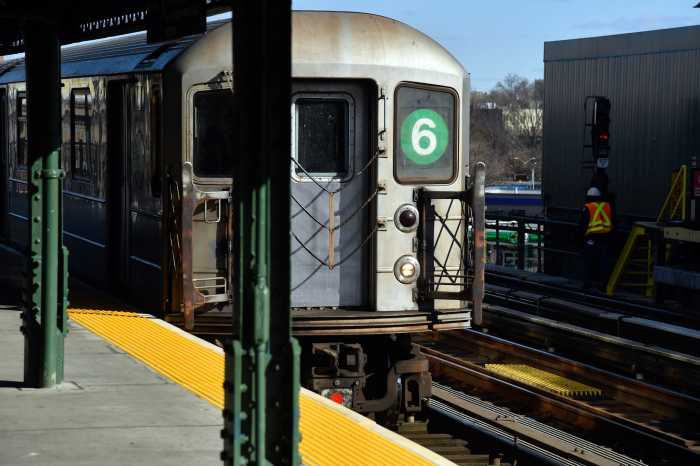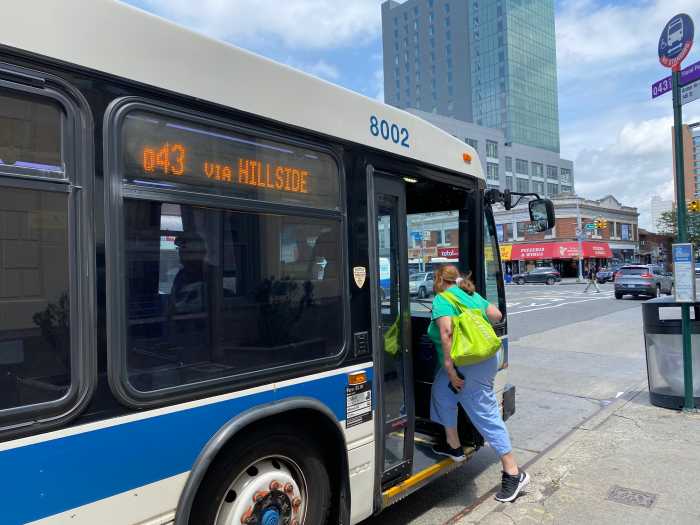What MTA Chair Pat Foye called the most extensive disinfecting operation in the history of New York City Transit began Wednesday when the trains came to a halt systemwide from 1 to 5 a.m.
Waiting to pounce on arriving trains at the 96th Street station — the Q train terminus in Manhattan — were 14 cleaners to not only sterilize touch-points on trains, but also floors and seats on the Second Avenue Subway. There were also quite a few police officers there to escort people off the trains and out of the stations — and keep them out while the MTA crews got to work.
In the mezzanine stood a visibly weary interim NYC Transit President Sarah Feinberg, who explained that organizing the effort ensure safety for workers and commuters was, and would continue to be, no easy task.
“This is not going to be wrinkle free, this is not going to be perfect. We’ve never done anything like this before,” Feinberg said. “I recognize that this is incredibly disruptive. If this were a normal moment, we would have planned this for months.”
The decision to close the subways overnight every day, ordered by Governor Andrew Cuomo last week, comes after transit workers have taken a disproportionate brunt of the COVID-19 impact. According to the MTA, 109 New York City Transit workers are dead from the illness; a month ago, that figure was 33.
The MTA deployed 700 cleaners throughout the subway’s 472 stations, according to NYC Transit Vice President Sally Librera.
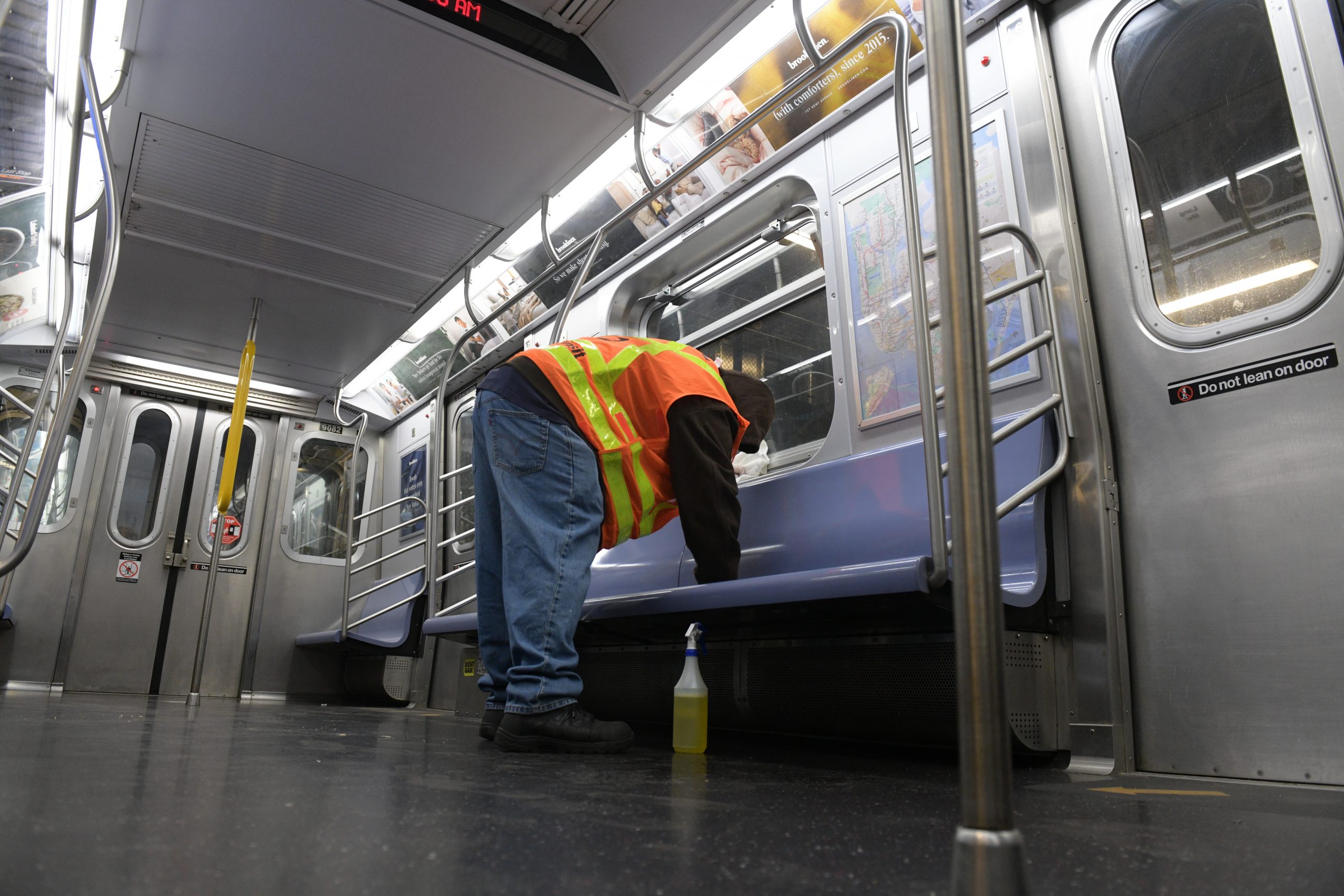
“One of the things that we’ll require during this cleaning operation is that at 1 a.m., everybody leave the system, except those in the uniforms on the New York City Transit, NYPD, MTA Police, and nurses or social workers working with the police. This will help us do this unprecedented and unbelievable amount of cleaning,” Foye said. “On the bus side, the number of bus rides will increase by 76% and the amount of buses on the streets during [the closure period] will more than double.”
But another main objective, especially on the part of the de Blasio administration, is clearing homeless people from the trains as a public health measure and a social services measure.
The mayor said of 250 homeless people taken off the subway last night, 139 have accepted services from Homeless Outreach.
At the Coney Island – Stillwell Avenue station, at the very opposite end of the Q train, was a very different scene from the new and modern 96th Street station. Here, 40 to 50 homeless people were guided off the trains where they were sleeping and out from the station by NYPD officers so the large terminal could be disinfected.
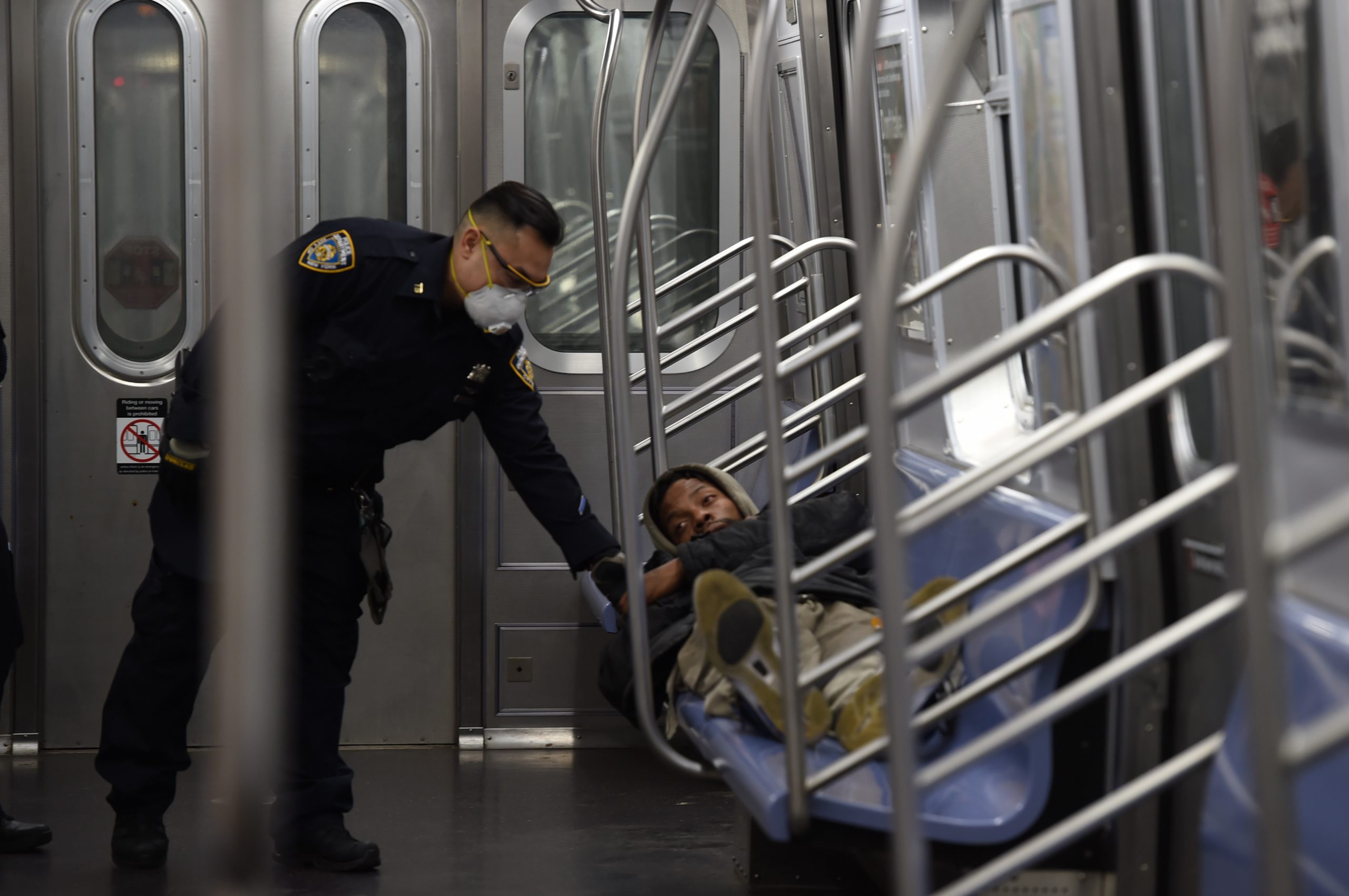
Members of Homeless Outreach and Transit Police tried to talk to many of them and convince them to accept help, but most did not want help, only to continue to ride the trains all night.
Many of them ended up simply sitting outside the station around the bus shelters, or merely paced back and forth anticipating the 5 a.m. reopening.
A few people expressed dismay that the trains were shut down before the 1 a.m. cut off. One woman was seen screaming outside the turnstiles, demanding that she be allowed to enter the system.
Tony Utano, president of the Transit Workers Union, said it was “about time that we do this.”
“Disinfecting the trains is an important thing. We will get this system back on track,” Utano said. “This is the first day of the shut down, so I’ve come to see the members, and give them encouragements, and I want to let everybody know, that we are here disinfecting trains, disinfecting stations, and still moving New York because we are essential – we need to be recognized. We were never recognized for the stuff that we did. We lost 72 people to this virus, but look at the trains and buses and you will see our people still disinfecting. And why – for their health and the health of the public.”
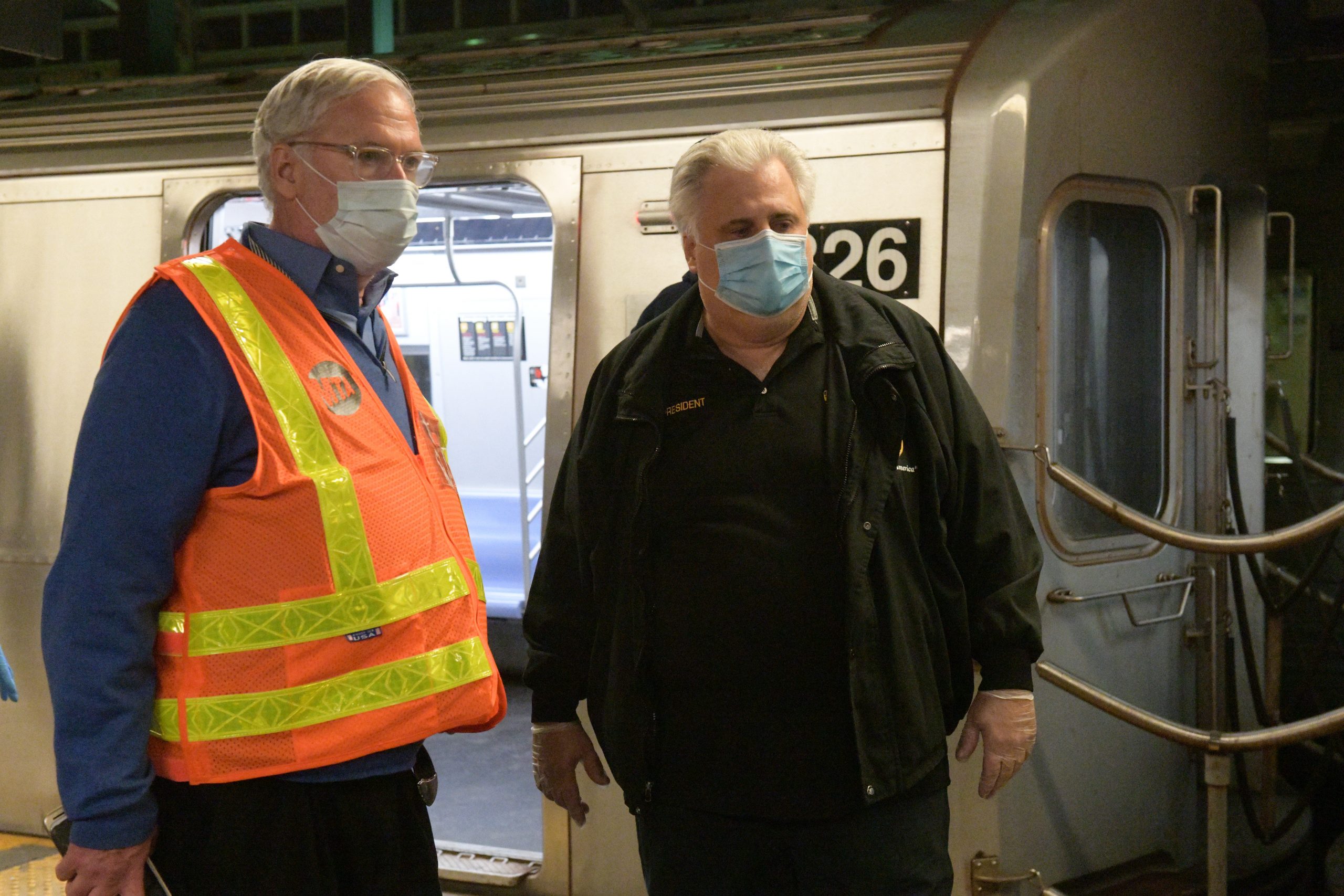
The MTA’s undergoing an extensive effort to replace the subways with a network of buses, but that comes with the acknowledgement that this may not be a solution for some essential workers. These individuals will be able to reserve for-hire vehicles on the MTA’s website.
Many transit workers at the Coney Island station said they were not surprised by the numbers of homeless that were removed from the trains.
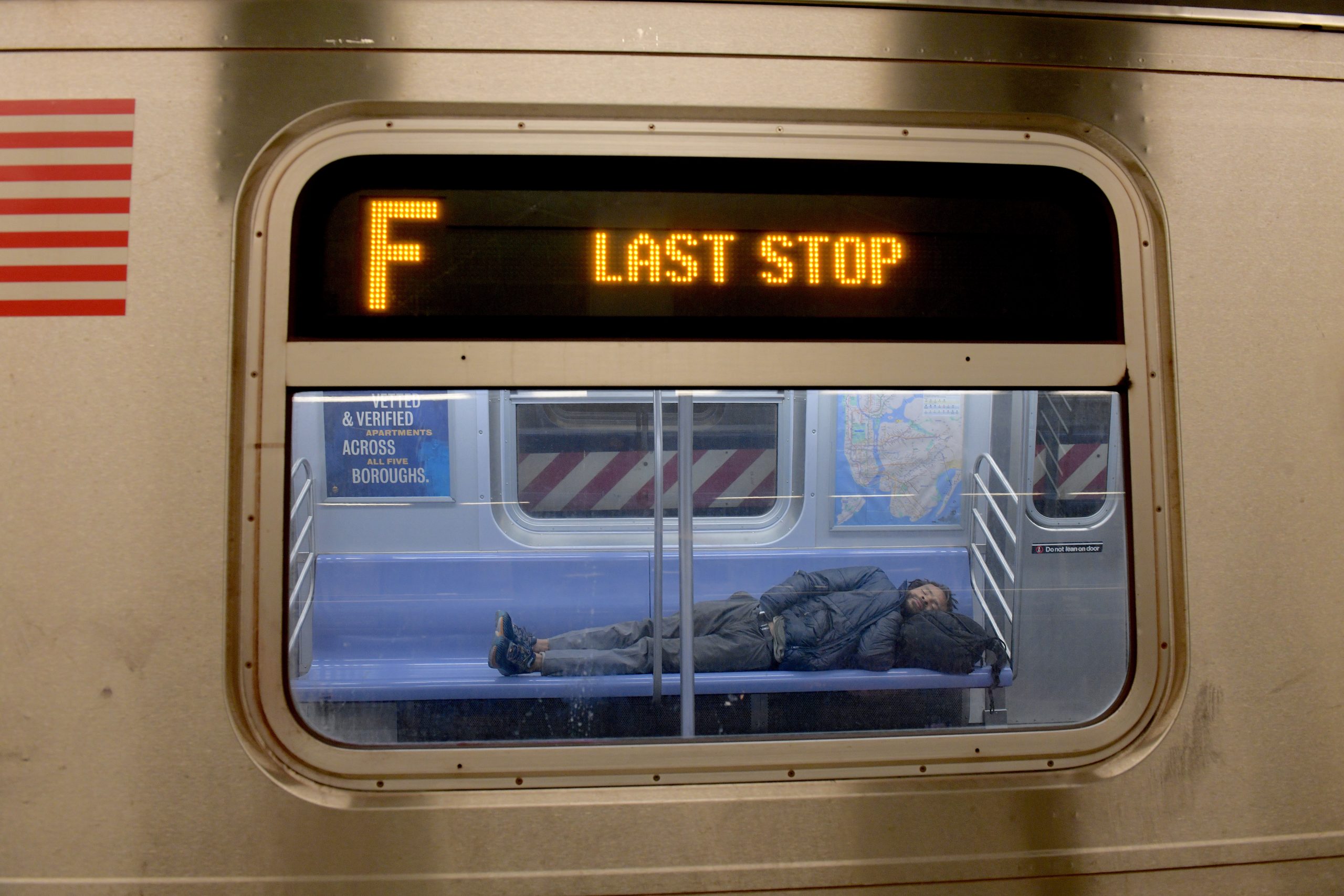
“They are here every night and they will have to do this every night,” one transit worker sighed. “I don’t know where all these people will go, but most need a lot of help.”
One straphanger, Primo Beltaromo, was commuting to a security job in Coney Island. He shook his head at the homeless being led off the trains and said he wasn’t surprised.
“Every night it’s worse and worse, and there are more homeless on the trains now than there ever was,” he said.
Todd Maisel contributed to this report.
